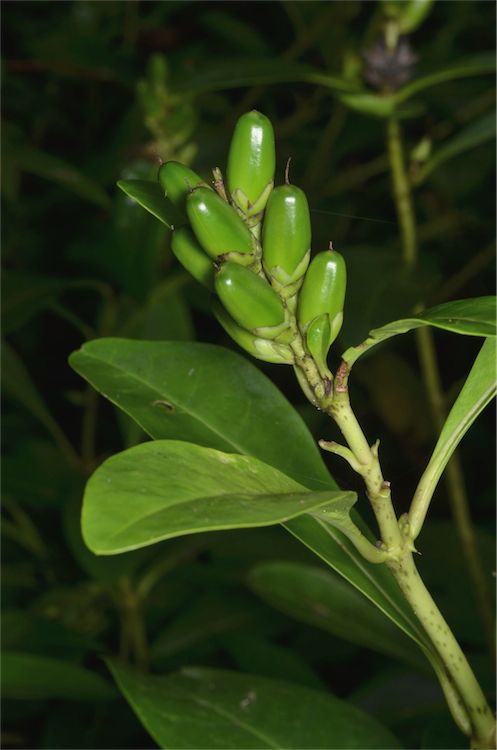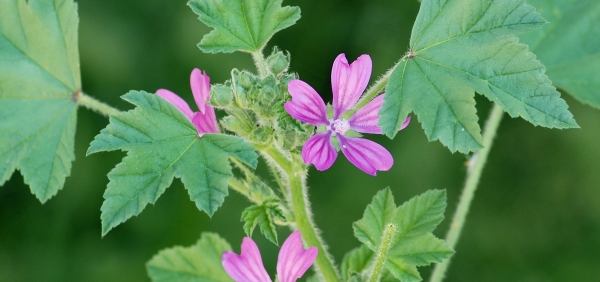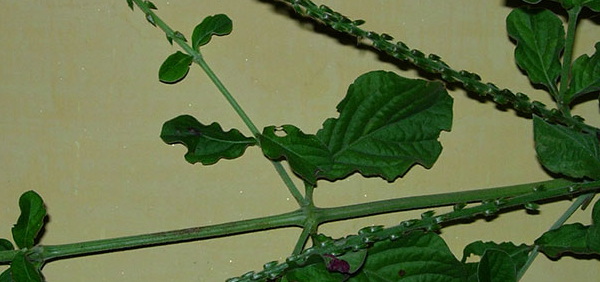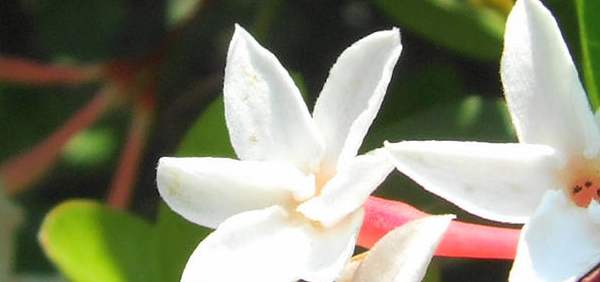artagala :
 Acanthus ilicifolius Linn. (Acanthaceae) is relatively lesser-known, yet important medicinal plant of Herbal Materia Medica. The plant is used in traditional systems of medicine, including Traditional Indian Medicine (TIM) or Ayurveda and Traditional Chinese Medicine (TCM). The plant is reported to contain phytochemicals including alkaloid and wide range of glucosides (lignan and phenylethanoid)
Acanthus ilicifolius Linn. (Acanthaceae) is relatively lesser-known, yet important medicinal plant of Herbal Materia Medica. The plant is used in traditional systems of medicine, including Traditional Indian Medicine (TIM) or Ayurveda and Traditional Chinese Medicine (TCM). The plant is reported to contain phytochemicals including alkaloid and wide range of glucosides (lignan and phenylethanoid)HISTORICAL AND MYTHOLOGICAL REVIEW:
The genus Acanthus L. has almost 300 species in tropical Asia and Africa with a centre of diversity in the Mediterranean but only three species is considered as mangroves, viz., Acanthus ilicifolius L., A. ebracteatus Vahl. and A. volubilis Wall (Singh and Odaki, 2004; Duke, 2012).Taxonomical Classification
Kingdom: Plantae - Plants
Subkingdom: Tracheobionta - Vascular plants
Superdivision: Spermatophyta - Seed plants
Division: Magnoliophyta - Flowering plants
Class: Magnoliopsida - Dicotyledons
Family: Acanthaceae
Genus: Acanthus
Species: Acanthus ilicifolius
Allied species:
(Syn: Acanthus doloarin Blanco; Acanthus ilicifolius var. subinteger Nees; Acanthus neoguineensis Engl.; Dilivaria ilicifolia (L.) Juss.);VERNACULAR NAMES
Sanskrit: HarikusaEnglish: holy leafed acanthus , Holy Mangrove, Sea Holly
Hindi: Hargoza
Urdu: هڙکت harkata
Telugu: Alasyakampa
Bengali: Harkuchkanta, Kentki
Marathi: मारांडी Marandi, Nivagur
Konkani: Moramdo
Oriya: Harkamcli
Tamil: Kaludaimulli
Malayalam: ചുള്ളി chulli, ചുള്ളിക്കണ്ടൽ chullikkantal, പയിങ്ങാച്ചുള്ളി Payinachhulli
Kannada: Mulluchulli
Japanese: Akansasu irikiforiusu.
Chinese: Lao shu le.
French: Feuille Saintes dAcanthe
German: Stechpalmenblättrige Bärenklau
Burma: Kaya,khayat,kayoro
Sinhalese: Katu ikili, ikiri
Tulu: ತುದೆಚುಳ್ಳಿ tudechulli
Varities:
Three species of Acanthus were recorded in the mangroves of South China, including Acanthus ebracteatus Vahl, Acanthus ebracteatus var. xiamenensis (R.T.Zhang) C.Y.Wu & C.C.Hu (Deng et al. 2006.) and Acanthus ilicifolius L. However, Acanthus ebracteatus var. xiamenensis has been combined with Acanthus ilicifolius in 2008 (Hou and Lu 2008). Only Acanthus ilicifolius is recorded in the Pearl River Region.Definition
Synonyms
Synonyms in Ayurveda: artagala, argata, arttagala, bahu kanta, pradharshanaRasa: Kashaya
Veerya: Sheetha
In traditional medicine, the plant is used in the treatment of diseases ranging from snake bite to skin diseases. Laboratory investigations on extracts of the plant have demonstrated significant pharmacological activities like antioxidant, anticarcinogenic, anti-osteporotic and hepatoprotective
Cultivation:
A plant of the tropics, where it is found at near the shoreline in areas with no dry season or with a short dryseason. It grows best in areas where annual daytime temperatures are within the range 18 - 26°c, but can tolerate 15 - 32°c. It prefers a mean annual rainfall in the range 1,500 - 2,500mm, but tolerates 1,000 - 3,000mmPrefers a position in full sun, tolerating some shade. Grows best in heavier soils of moderate to high fertility. Tolerant of flooding and of quite high levels of salt in the soil.Prefers a pH in the range 6.8 - 7.2, tolerating 6.5 - 7.56.
The plant sometimes forms a dense undergrowth in mangrove swamps that can be troublesome in wood-cutting operations.
The plants do not exclude salt at the root level. In fact, their sap is salty and excess salt is secreted through the leaves, to be removed by rain or wind. Sometimes, the salt can be seen as a white crystalline layer on the upper surface.
When the seedpods ripen, they open explosively to propel the seeds up to 2 metres away
Propogation:
SeedHarvesting:
Phytochemistry:
Parts used for medicinal purpose
Fruit, Leaves, Root, ,Dosage:
Decoction of 30-60 g of dried material used for acute and chronic hepatitis, swelling-enlargement of the liver and spleen, swelling and enlargement of the lymph nodes, gastralgia, asthma.Antidote:
Young leaves used as an antidote for snake venomControversy:
The genus Acanthus L. has almost 300 species in tropical Asia and Africa with a centre of diversity in the Mediterranean but only three species is considered as mangroves, viz., Acanthus ilicifolius L., A. ebracteatus Vahl. and A. volubilis Wall (Singh and Odaki, 2004; Duke, 2012).Commercial value:
The entire plant can also be used as a drying agent and so placed in rice sacks. It is cultivated as an ornamental plant.Morphology:
Histology:
Anatomy of leaves described as dorsiventral, leaves showing adaxial and abaxial barrel shaped epidermal cells with thick cuticle. Salt glands present in adaxial side. Each gland have stalk cell and head comprising of variable number of cells. Median vein showed numerous bundles with irregular nature. The whole bundle do not shows a continuous sheath of sclerenchyma. Median vein somewhat paw shaped consists of wide parenchymatous central portion. The lateral vein bundles were somewhat near to the median bundle showing continuous layer of sclerenchyma sheath. The hypodermis is composed of two layers of colourless, polygonal shaped cells below the adaxial epidermal cells. The stomata were confined on abaxial side only. The palisade tissue was two layers in thickness. Vascular bundles collateral. Micro anatomy showed ridges and furrow like appearance in the outer surface. Epidermal cells were straight, glandular trichomes and stomata intermittently seen in the abaxial region. Stomata deeply sunken.Geographical distribution:
ECOLOGICAL ASPECT:
: It commonly grows on the river banks or tidal canal sides or low swampy areas in the mangrove forests and its vicinity.Plant conservation:
Least ConcernGeneral Use:
Therapeutic Uses:
Systemic Use:
Administration:
Applied topically, the leaves are used as a poultice on wounds, rheumatic joints and areas of neuralgic pain[Pharmacological:
The aerial parts of the plant are rich in mucous and are considered to be astringent, diuretic, emollient, expectorant, resolvent, stimulant and nervineClinical trials:
Research:
Toxicity studies:
Use in other system of medicine:
CONCLUSION:
Acanthus ilicifolius is an erect or reclining shrub growing from 50 - 200cm tall with scarcely branched stems that often produce adventitious aerial roots. The leaves have spiny edges when the plants are growing in an open position, but can be totally spineless when growing in the shmade.The plant is harvested from the wild for local use as a medicine and material for making soap.
Photos of artagala -
- Courtesy: http://tropical.theferns.info/plantimages/8/b/8beb83bf1a1bd34d61f69ce6784cbcfb493c911f.jpg
- Courtesy: http://tropical.theferns.info/plantimages/e/a/ea18c85108b1083ae079a06dffd7df6eeef7d02b.jpg
- Courtesy: http://tropical.theferns.info/plantimages/6/a/6a00d10545cef86d1c4a669bf0df841acbde68c5.jpg
- Courtesy: http://tropical.theferns.info/plantimages/c/2/c26a86420bb32e1940c5b4f448c35517a07bcfda.jpg
- Courtesy: http://tropical.theferns.info/plantimages/b/8/b8cca36a66c021c1548f175bc03b0837168fbd9c.jpg
- Courtesy: http://tropical.theferns.info/plantimages/4/9/4948cc70a82cdfac1a5af0dad0f8ce07ecb1522b.jpg
- Courtesy: http://tropical.theferns.info/plantimages/3/9/393f1cf3b454e32439344c124bdebf298ab2d19b.jpg
- Courtesy: http://tropical.theferns.info/plantimages/8/b/8beb83bf1a1bd34d61f69ce6784cbcfb493c911f.jpg
- Courtesy: http://tropical.theferns.info/plantimages/e/a/ea18c85108b1083ae079a06dffd7df6eeef7d02b.jpg
KEY WORDS: artagala Acanthus ilicifolius Linn.
- » Classification and names of artagala
- » Synonyms and definitions of artagala
- » Drug Properties of artagala
- » Chemical Constituents of artagala
- » Standardization of artagala
- » Parts used and Dosage of artagala
- » Morphology and Histology of artagala
- » Distribution and Conservation of artagala
- » Cultivation of artagala
- » artagala in the market
- » Medicinal Uses of artagala
- » Researches and clinical trails of artagala
- » artagala in other sytems of medicine
- » Ayurvedic formulations with artagala
- » Images of artagala






















